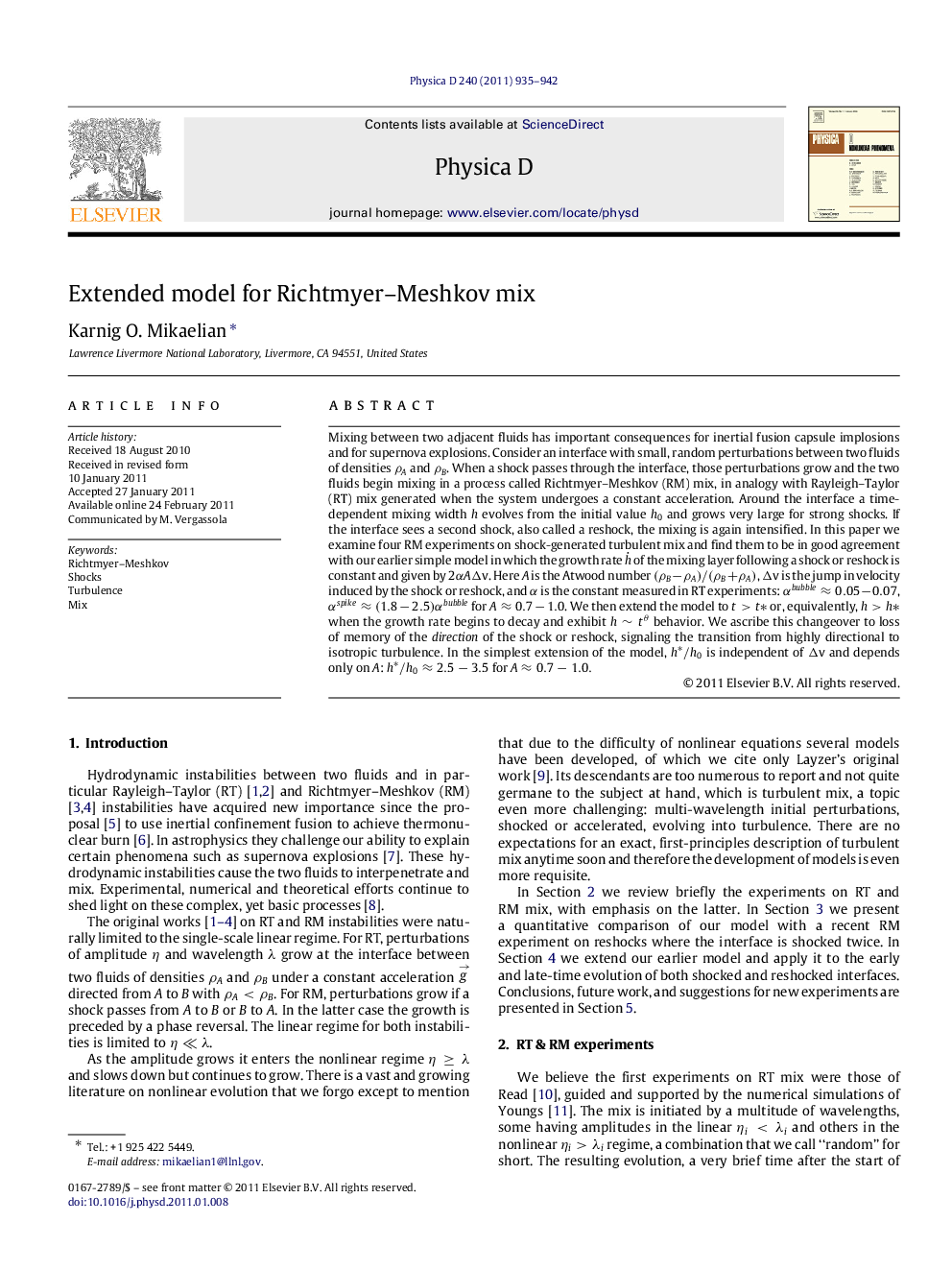| Article ID | Journal | Published Year | Pages | File Type |
|---|---|---|---|---|
| 1897219 | Physica D: Nonlinear Phenomena | 2011 | 8 Pages |
Mixing between two adjacent fluids has important consequences for inertial fusion capsule implosions and for supernova explosions. Consider an interface with small, random perturbations between two fluids of densities ρAρA and ρBρB. When a shock passes through the interface, those perturbations grow and the two fluids begin mixing in a process called Richtmyer–Meshkov (RM) mix, in analogy with Rayleigh–Taylor (RT) mix generated when the system undergoes a constant acceleration. Around the interface a time-dependent mixing width hh evolves from the initial value h0h0 and grows very large for strong shocks. If the interface sees a second shock, also called a reshock, the mixing is again intensified. In this paper we examine four RM experiments on shock-generated turbulent mix and find them to be in good agreement with our earlier simple model in which the growth rate ḣ of the mixing layer following a shock or reshock is constant and given by 2αAΔv. Here AA is the Atwood number (ρB−ρA)/(ρB+ρA)(ρB−ρA)/(ρB+ρA), Δv is the jump in velocity induced by the shock or reshock, and αα is the constant measured in RT experiments: αbubble≈0.05−0.07αbubble≈0.05−0.07, αspike≈(1.8−2.5)αbubbleαspike≈(1.8−2.5)αbubble for A≈0.7−1.0A≈0.7−1.0. We then extend the model to t>t∗t>t∗ or, equivalently, h>h∗h>h∗ when the growth rate begins to decay and exhibit h∼tθh∼tθ behavior. We ascribe this changeover to loss of memory of the direction of the shock or reshock, signaling the transition from highly directional to isotropic turbulence. In the simplest extension of the model, h∗/h0h∗/h0 is independent of Δv and depends only on AA: h∗/h0≈2.5−3.5h∗/h0≈2.5−3.5 for A≈0.7−1.0A≈0.7−1.0.
Research highlights► We compare experiments with our earlier model on mix generated by shocks or reshocks. ► One experiment reported on shocks. Three other experiments reported on reshocks. ► The growth rates reported by all 4 experiments agree with the model. ► We extend the model to predict the late-time evolution of the turbulent mix width. ► We predict how initial conditions affect the evolution of the turbulent mix width.
